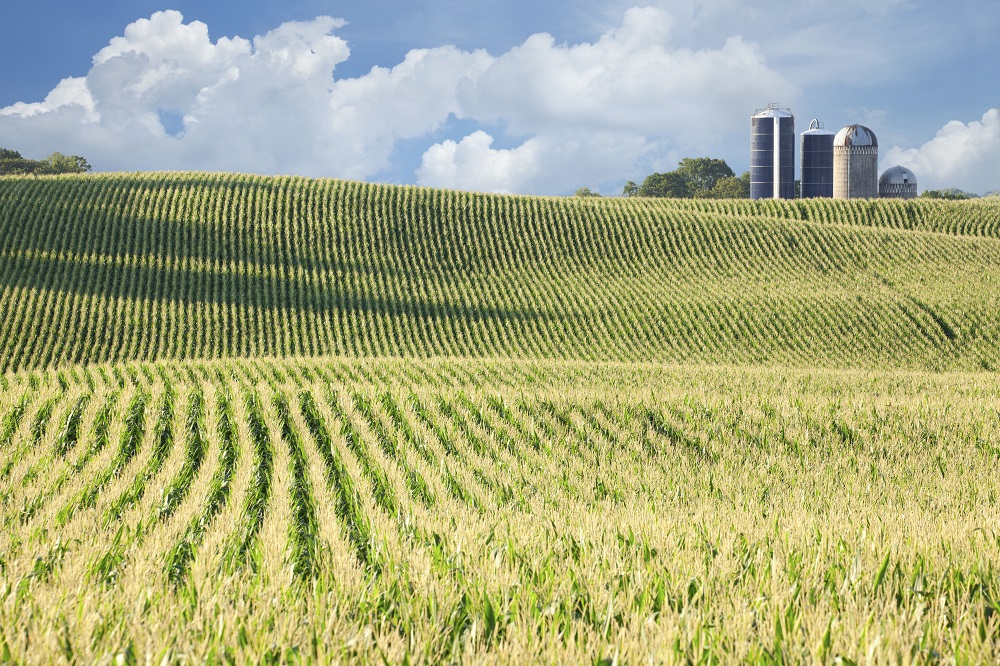
One of the greatest threats to the quality and health of Great Lakes and its tributaries is excess chemicals, fertilizers, and sediment from irresponsible agricultural practices.
There are many ways these pollutants enter our water, but runoff from single crop farmland and animal factory farms is one of the largest contributors to this problem. This pollution fuels harmful algal outbreaks across the Great Lakes region, which is a significant threat to the region’s drinking water, quality of life, and economic well-being.
Agriculture is the largest contributor to pollution in western Lake Erie where, in 2014, nearly a half-million people lost access to safe tap water for two days, and in some cases more than a week, because toxic algae contaminated water sources.
So why does agricultural pollution cause so many problems in the Great Lakes? Here are a few reasons why unaccountable industrial corporate farming is bad for our water:
Lack of buffers and living cover on the land
Pollutants like nitrogen and phosphorus enter our water in various ways, especially from agricultural field runoff. There is a simple and cost effective measure to help prevent these pollutants from ever reaching our waters – vegetative buffer strips planted alongside the borders of farmland and waterways as well as other living cover on agricultural land. Unfortunately many large farms don't use buffer strips and special interests have fought requirements to include this commonsense measure.
Drain tile or subsurface tile
These are artificial drainage systems that keep moisture levels more consistent in the soil and increase productivity on the land. However, tile drainage negatively impacts water quality because more water flows more rapidly into our ditches, streams, and rivers. That leads to increased flooding and erosion. In addition, tile drainage carries higher levels of nutrients and pesticides into our water which can lead to more harmful algae outbreaks and impact safe drinking water supplies.
Industrial factory farming
These “farms” confine tens of thousands of animals in very close quarters. These facilities produce huge amounts of animal waste, too much to sustainably apply it to the land as fertilizer. The excess waste is stored in pits that can leak into groundwater supplies. In some cases there have been catastrophic spills when pit walls have broken open. The manure pits can also be very bad for air quality for surrounding residents as well.
Pesticides, fertilizers, and other chemicals
In many watersheds where single crop agriculture or factory farming dominates the landscape, less than half of lakes and rivers fully support swimming because of excess phosphorus and nitrogen. Many of the communities are facing drinking water contamination as a result of using these chemical inputs. According to the Minnesota Department of Health’s Annual Drinking Water Report, 537 public water supply wells across the state have elevated nitrate levels, and roughly 10 percent of private wells in vulnerable areas already exceed health limits. The cost to treat drinking water for nitrates to make it safe to drink is high -- 10 communities in Minnesota will face bills in the thousands of dollars per household. These chemical nutrientscan cause harmful algal outbreaks threatening recreation and drinking water supplies and are also the cause of the “Dead Zone” in the Gulf of Mexico which grew to record size in 2017.
Pesticides are found in the air we breathe, the food we eat, and the water we drink. They are used to kill weeds (herbicides), insects (insecticides), fungus (fungicides), rodents (rodenticides), and others. Due to overuse of pesticides and only one crop on much of the land, pests become specialized and resistant to these chemicals, which lead to more pesticides being applied. Pesticides are hazardous to human health causing reproductive and developmental problems, cancer, kidney and liver damage, and endocrine disruption.
Ethanol and Monoculture
Federal law has mandated that gasoline for cars and trucks to be mixed with an increasing amount of corn-based ethanol since 2007. Ethanol burns less carbon dioxide than refined petroleum products. This has meant that a lot of corn is grown just for fuel, not food. But the environmental impacts of the “corn boom” may outweigh the benefits of the biofuel.
Since the mandate, landowners have filled-in wetlands around the Great Lakes — releasing carbon dioxide that had been locked in the soil — to cash in on high corn prices. Billions of pounds of fertilizer have been sprayed onto the landscape to make it more economically productive, some of which has polluted drinking water. This has cost water ratepayers millions of dollars to clean up and treat to make the water safe to drink.
What’s it all mean for the Great Lakes and our water?
These problems have one thing in common—they all negatively impact our Great Lakes. Whether our priority is drinking water protection, swimming or fishing in the Great Lakes or supplying necessary water for our businesses or industries on the lakes; industrial agricultural pollution is a threat to the lakes and these priorities.
Agriculture has played an important role in the Great Lakes region’s history and will undoubtedly be a critical part of the future. If you have any questions or want to get more involved in protecting our Great Lakes from the threat of agricultural pollution, please don’t hesitate to contact us.